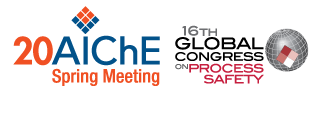

Digital procedures are usually accessed through a smart device such as a tablet or a phone. However, like paper-based procedures their usability is limited by their access. In frequent (common) tasks such as loading a railcar or performing maintenance on a control valve, it is not feasible for the operator to have continuous access to the procedure while simultaneously performing the task. Operators typically place the procedure (digital or paper-based) at a safe distance from the worksite and access/use the procedure as and when required. This limits procedure usage and adversely affects procedure adherence. However, this drawback can be tackled in the case of digital procedures using artificial intelligence-based voice enabled conversational agent (chatbot).
A conversational agent (CA) or chatbot is a software system that can interact or “chat†with a human user in natural language such as English [3]. Chatbots recognize patterns in the input sentences, and respond with sentences from a template [4]. With the current advances in artificial intelligence, chatbots can understand human users very well and can provide human-like responses. Thus, operators can communicate with the voice-enabled chatbot (similar to communicating with a control room operator) and ask their queries as opposed to frequently moving back and forth from the worksite to the location of the procedure.
As a part of this study, we are developing a novel artificial intelligence-based voice enabled conversational agent for assisting digital procedure adherence. The chatbot is coded in the programming language, Python using the NLTK module. The chatbot code parses the query from the operator as well as the text from the digital procedures. The parsed query is processed to understand the intent/context of the operator using natural language processing. The chatbot is trained using the text from the digital procedures using deep learning techniques and provides responses using natural language generation. The chatbot is also linked with the digital procedure system/database to further facilitate its usage. Thus, the functionalities of the digital procedures such as marking a step as completed, reporting an issue with a particular step etc. can be accessed through the chatbot. An example of the operator-chatbot interaction for loading of a railcar task is provided below:
Operator: Hey Chatbot, What’s the next step in the procedure?
Chatbot: The next step of the procedure is “Inspect controlling valves for defectsâ€
Operator: Umm, which controlling valves should I look at?
Chatbot: Please inspect ball valve, globe valve, pump bypass valve and railcar emergency shutoff valve.
Operator: Ok that’s done. Mark that step as completed. Tell me the next step.
As observed from the above interaction, it can be proposed that voice enabled conversational agent has the potential to significantly improve procedure adherence thus improving the safety and performance of process systems.
[1] Procedures in digital format, Value Chain Manag. (2015) 47–48. https://proceedix.com/themes/proceedix/assets/images/data/frieslandcampi... (accessed January 10, 2019).
[2] DevonWay, Digital Procedures, DevonWay’s Solut. (2016). https://www.devonway.com/wp-content/uploads/2016/10/Digital-Procedures-P... (accessed January 10, 2019).
[3] B.. Shawar, E. Atwell, Different measurements metrics to evaluate a chatbot system, in: Proc. Work. Bridg. Gap Acad. Ind. Res. Dialog Technol., 2007.
[4] H.N. Io, C.B. Lee, Chatbots and conversational agents: A bibliometric analysis, IEEE Int. Conf. Ind. Eng. Eng. Manag. 2017–December (2018) 215–219. doi:10.1109/IEEM.2017.8289883.
Presenter(s)
Language
Pricing
Individuals
| AIChE Member Credits | 0.5 |
| AIChE Pro Members | $19.00 |
| Employees of CCPS Member Companies | Free |
| AIChE Graduate Student Members | Free |
| AIChE Undergraduate Student Members | Free |
| AIChE Explorer Members | $29.00 |
| Non-Members | $29.00 |
